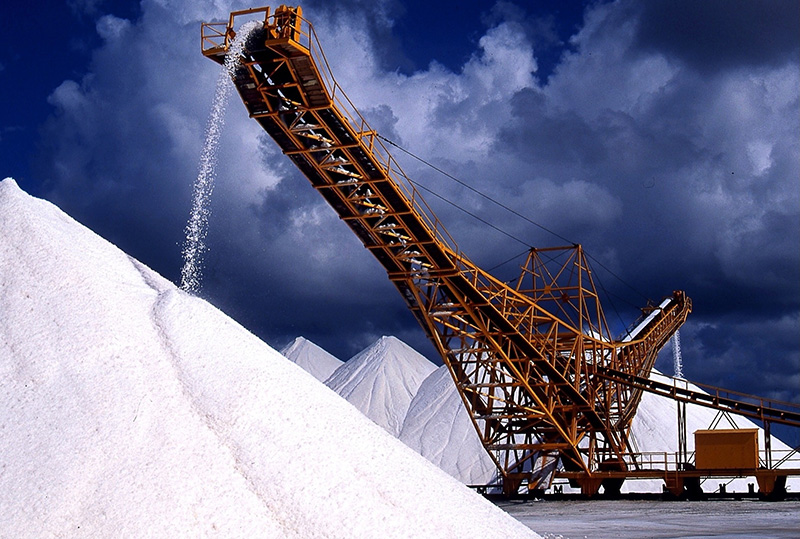The Generic Name ‘Salt’
‘Salt’ is the generic name we use to describe any substance produced by the reaction of an acid with a base – a process known as a neutralisation reaction.
All these salts share some characteristics: their ionic bonds, their relatively high melting points, their electrical conductivity when melted or in solution and their crystalline structure as a solid.
Salts, both those occurring naturally and those made by neutralisation processes, are incredibly important substances.
It is estimated that salt has over 14,000 uses – you might be surprised to learn it has an essential role in the making of thousands of items we use on a daily basis – including the computer you’re using to look at this website, the trainers on your feet and the clothes you’re wearing!
Properties of Salt
Salt is a chemical compound with a number of interesting properties:
- Crystals or white crystalline powder.
- Transparent and colourless in crystalline form – rather like ice.
- Crystallises in the isometric system, usually in the form of cubes.
- Soluble in water (35.6g/100g at 0°C and 39.2g/100g at 100°).
- Slightly soluble in alcohol, but insoluble in concentrated hydrochloric acid.
- Melts at 801°C and begins to vaporize at temperatures just slightly above this boiling point 1,413°C.
- Hardness of 2.5 on the MOH scale of hardness.
- Specific gravity of 2.165.
- Non-combustible – low toxicity.
- Hygroscopic – absorbs moisture from damp atmospheres above 75 per cent relative humidity – below this, it will dry out.
In its natural form, salt often includes traces of magnesium chloride, magnesium sulphate, magnesium bromide, and others. These impurities can tint the otherwise transparent crystals, yellow, red, blue or purple.
It is estimated that salt has over 14,000 uses

Dictionary Definitions
- A crystalline compound, sodium chloride, NaCl, occurring as a mineral, a constituent of seawater, etc., and used for seasoning food, as a preservative, etc.
- Table salt mixed with a particular herb or seasoning for which it is named: garlic salt; celery salt.
- Chemistry: Any of a class of compounds formed by the replacement of one or more hydrogen atoms of an acid with elements or groups, which are composed of anions and cations, and which usually ionize in solution; a product formed by the neutralization of an acid by a base.
- Salts, any of various salts used as purgatives, as Epsom salts.
- An element that gives liveliness, piquancy, or pungency: Anecdotes are the salt of his narrative.
(The source: http://dictionary.reference.com/browse/salt?s=t)
- Also Common Salt [mass noun] A white crystalline substance which gives seawater its characteristic taste and is used for seasoning or preserving food: season with salt and pepper
- Chemistry: Any chemical compound formed from the reaction of an acid with a base, with all or part of the hydrogen of the acid replaced by a metal or other cation.”
(The source: http://www.oxforddictionaries.com/)
